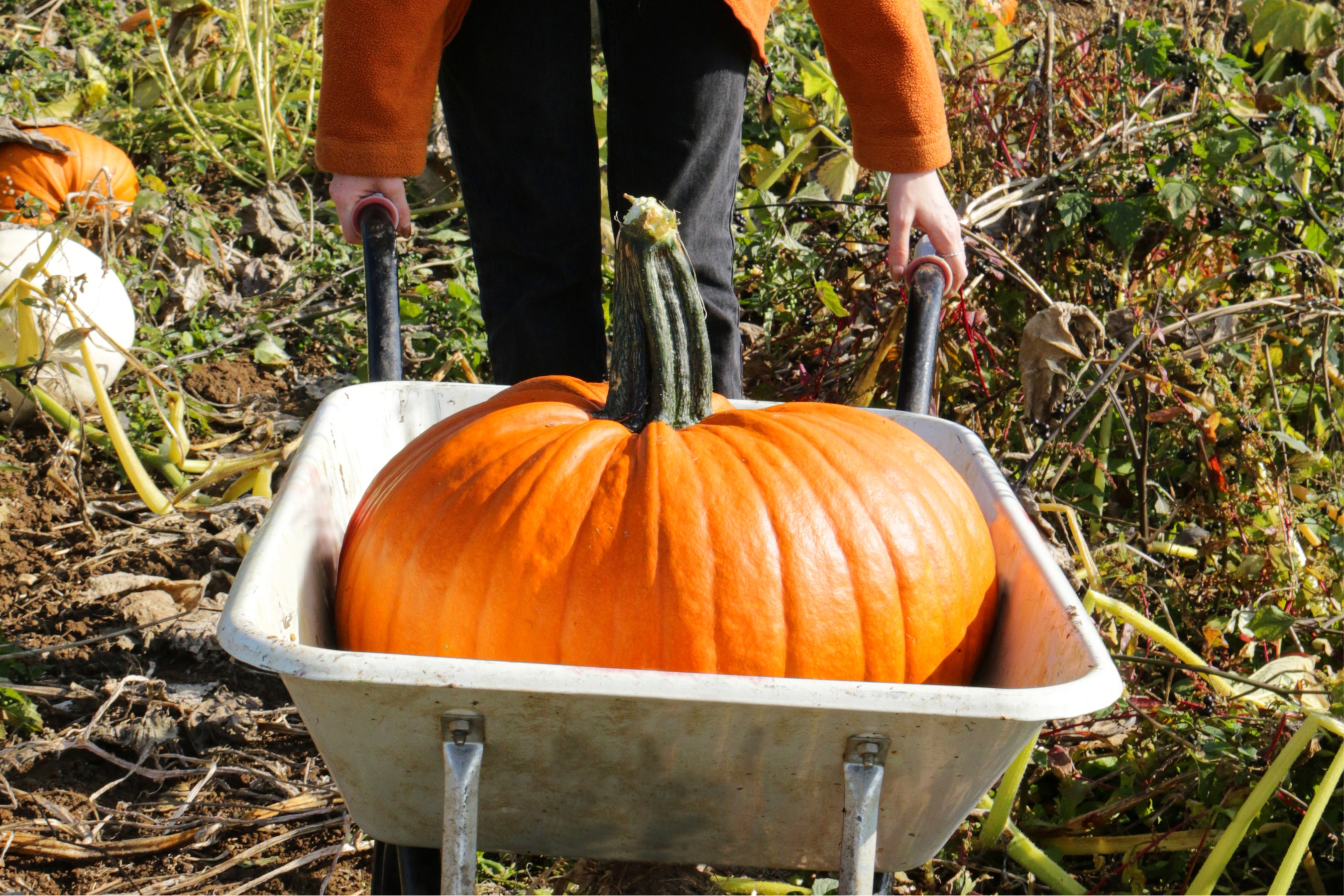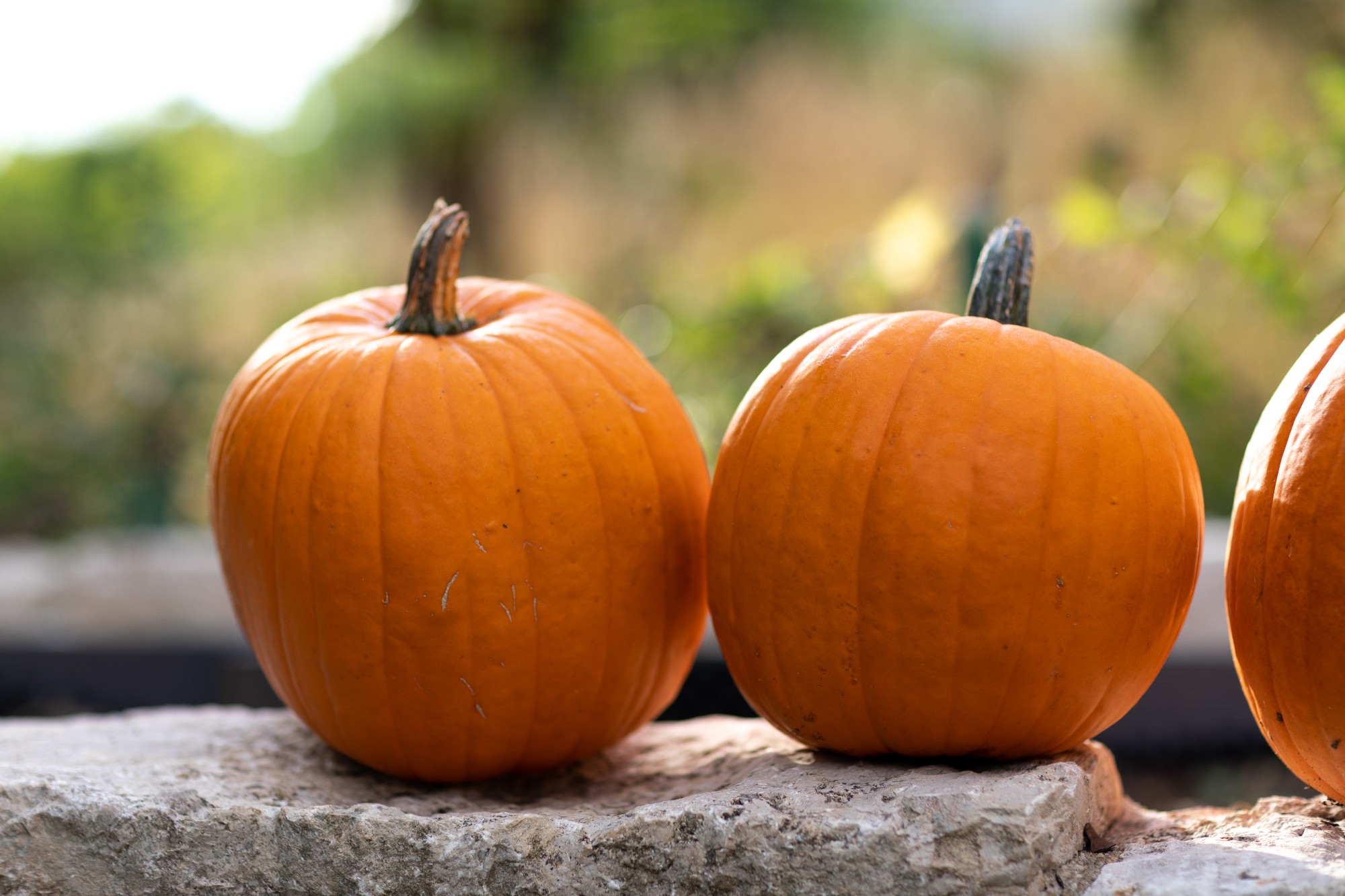How and when to harvest pumpkins for Halloween
Experts reveal everything you need to know about harvesting pumpkins in time for the spooky season


One of the easiest and most rewarding crops going, if you've grown your own gourds this year, knowing when and how to harvest pumpkins properly is a must so that you can pick, eat and enjoy yours all throughout fall, not to mention, have them on display for Halloween...
Growing pumpkins is super rewarding, but even if you're joining pumpkin pickers at a local farm, there are some dos and don'ts when it comes to harvesting pumpkins. Depending on how big your pumpkins are, you could get away with a good pair of secateurs, if yours are fairly big stemmed, you may need a bigger gardening tool.
So before you start thinking about pumpkin carving ideas, how do you know when your pumpkins are ready to pick, and what’s the best way to do it?
We asked two pumpkin growing experts for their advice…
What time of year should you harvest pumpkins?
Traditionally, Fall is the best time of year to harvest pumpkins. ‘You can pick them between mid-September to late October, before the hard frosts set in for winter,’ explains Sean Lade, gardening expert and director of Easy Garden Irrigation.
Exactly when to harvest pumpkins partly depends on what you want to use them for, says Holly Bell, from Bell’s Pumpkin Patch, where over one million pumpkins are harvested each year. ‘Smaller pumpkins for eating, such as Munchkin or Harlequin squashes, usually taste sweeter when they’re smaller, so these can be harvested any time from early September. However, if you’re growing the standard orange pumpkins for carving or display, you have a couple of choices. You can either pick them in mid-September, or wait it out, leaving them on the stem for as long as possible to get as much growth as you can. However, this does run the risk of rot setting in if you wait too long.’
So deciding on the best time depends largely on when you want to kit your home out with fall decor and of course, whether you want to eat yours or not.
Get small space home decor ideas, celeb inspiration, DIY tips and more, straight to your inbox!
For bigger pumpkins to add to any Halloween decorations you have on display, the bigger the better. Not to mention, any gourds that are less than perfect will just add to the spookiness!
How do you know when your pumpkins are ready to pick?
There are two main things to look for when considering whether your pumpkin is ready to pick or not, advises Holly. The first is the leaves of the plant. ‘While your pumpkins are actively growing, the canopy of leaves will be raised, lush and green. When the pumpkins are ready to pick, these leaves will start to die back, leaving the pumpkins more visible. The leaves will also develop the first signs of mildew – a powdery white substance. This is a normal part of the process and nothing to worry about,’ she explains.
Next, take a look at the stem. ‘If the stem of your pumpkin looks fleshy, watery and slightly translucent, it is not ready. If you harvest it at this point, the pumpkin won’t have had enough time to set, and it will shrink and shrivel,’ says Holly. ‘Instead, wait until the stem has gone hard, firm, and solid in color.’

Wait until the leaf canopy has started to die down before picking your pumpkins
Will tapping my pumpkin tell me if it's ripe?
You’ll often read advice telling you to knock firmly on the outside of a pumpkin. ‘If it sounds hollow when you knock on the surface, you know it’s perfectly ripe,’ suggests Sean.
Holly, however, advises against this. ‘We always tell people to handle pumpkins with care as they’re not as robust as you think! If you knock it too hard, lump it around, dropping it into a wheelbarrow or on the ground, it may bruise. You won’t see the bruise immediately, but once the cells have been damaged, rot will quickly set in, and it may not last until Halloween. Whereas if you treat your pumpkin gently, it should happily survive for months.’ Sean agrees that pumpkins need more care than you realise. ‘Don’t carry them by the stem, as this may damage your pumpkins.’ Cradle them from underneath, instead.
What tool should I use to pick pumpkins?
The good news is that you don’t need any special tools to harvest pumpkins. ‘To pick your pumpkins, you simply need to cut through the stem that attaches them to the plant. Secateurs may not open wide or sharp enough, so I use sharp ordinary long-arm garden loppers instead,’ reveals Holly, ‘Alternatively, you can use a good serrated knife - like a bread knife - and use a sawing action to cut through the stem.’
My pumpkins aren't orange yet. Should I still pick them?
You can leave your pumpkin on the plant as long as the section of the stem right next to the fruit hasn’t gone damp and squidgy. ‘This is a sign of rot, and if you see that happening, it’s time to cut your pumpkin free, regardless of its color, before the rot travels down into the fruit,’ says Holly. Some experts also recommend raising your pumpkins up slightly from the ground, on pieces of brick or tiles during this final growing stage, to stop their bottoms from getting damp.
Don’t worry if your pumpkins are still green, or not quite as rich an orange color as you’d like when you feel it’s time to harvest them: ‘If you sit them somewhere light and sheltered, such as on a sunny windowsill, they should turn a lovely shade of orange,’ reassures Holly.
Sean is in agreement: ‘Pumpkins turn orange when they’ve matured, but if your pumpkin is still green and the vines have died, or a prolonged period of rain or frost is due, cut the stem at least an inch away from the pumpkin itself. Keeping it in a dry and sunny spot will ripen and toughen the skin.’

The perfect pumpkin: bright orange and a good size for carving!
What should I look for in a good carving pumpkin?
When it comes to size, bigger isn’t always better. ‘The golden rule is that the heavier your pumpkin is to carry, the harder it will be to carve,’ says Holly. ‘Giant pumpkins look fantastic, but some of the really big ones have flesh around 4in (10cm) thick, which will be tricky to handle and will require a really strong bladed knife to cut out even the most basic of Jack-o-lantern designs.’
While this shouldn’t stop anyone ready and willing to get their power tools out, or people looking for no-carve pumpkin decorating ideas, if you have children, she recommends opting for a pumpkin that your kids can easily pick up and carry, as the flesh will be thinner and more manageable. For a simple guide to carving pumpkins like a pro, check out our feature.
How do I store pumpkins after harvesting them?
If you’ve harvested your pumpkins well before Halloween, our experts suggest keeping them in a cold, dry place. ‘If your pumpkin is ripe and there are still a few weeks before Halloween, store it somewhere cool, as warmth will make it sweat and rot from the bottom,’ says Sean. ‘A shed or garage is ideal,’ adds Holly. ‘Just keep them away from direct light and heat, such as radiators. If you look after them this way, they will store for months.’ Read our feature for more tips on how to keep your pumpkin from rotting.

Jenny has been a features and lifestyle journalist for over 20 years and writes about homes and gardens for national newspapers and magazines such as the Daily Mail, Good Homes and Easy Gardens as well as for Realhomes.com. When not writing about homes, she’s helping redecorate them as an interior designer at Decorbuddi.com, tackling everything from bedroom revamps to kitchen renovations. Jenny believes you can never have too much colour, cushions or cacti, and has a particular soft spot for terrazzo.